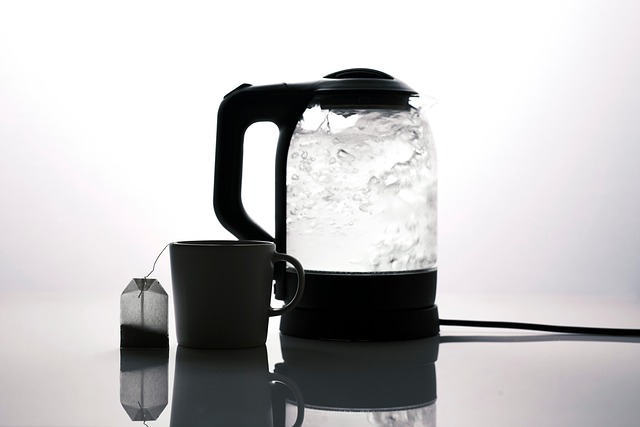Water heater maintenance is crucial for preventing costly failures caused by sediment buildup, old age, incorrect settings, and poor installation. Regular care includes flushing, checks for anomalies, and proper cleaning to extend appliance life, avoid repairs, and ensure safety. By incorporating annual or semi-annual maintenance into your checklist, you can optimize performance, prevent leaks, and maintain efficient heating.
Water heaters are often overlooked until they malfunction, leading to costly repairs or replacement. To avoid this, understanding the #1 maintenance task can significantly extend their lifespan. This article guides you through identifying common water heater failures and offers a step-by-step routine for regular maintenance. By following these tips, you’ll not only prevent unexpected breakdowns but also ensure optimal energy efficiency. Discover the essential practices for keeping your water heater in top condition.
- Understanding Water Heater Failures: Common Causes and Symptoms
- The Essential Maintenance Routine: Step-by-Step Guide
- Benefits of Regular Maintenance and Tips for Prevention
Understanding Water Heater Failures: Common Causes and Symptoms

Water heater failures can be frustrating and costly, often leaving homeowners with no hot water or even potential safety hazards. Understanding common causes and symptoms is key to preventing such issues. One of the primary reasons for water heater failure is sediment buildup. Over time, minerals and other particles in the water accumulate at the bottom of the tank, reducing its efficiency and potentially causing damage. This sediment can restrict water flow, insulate the elements, and even lead to leaks or explosions if left unchecked.
Other factors contributing to water heater failures include old age, incorrect settings, and poor quality installation. Older heaters wear out faster, while improper temperature settings can lead to excessive energy usage and strain on the system. Moreover, a poorly installed water heater is more susceptible to damage from tremors or physical shocks, leading to potential leaks or even fire hazards. Regular water heater maintenance, including flushing and checking for any anomalies, is crucial in addressing these common issues before they turn into costly repairs or worst-case scenarios.
The Essential Maintenance Routine: Step-by-Step Guide

Regular water heater maintenance is a crucial, often overlooked aspect of home ownership. By incorporating a simple, step-by-step routine into your annual or semi-annual checklist, you can significantly extend the lifespan of this essential appliance and prevent costly surprises.
Start by shutting off the water supply to your heater. Then, drain a few gallons of water from the tank to remove any sediment buildup at the bottom. Next, use a solution of equal parts white vinegar and water to thoroughly clean the interior of the tank, removing any mineral deposits or rust. After cleaning, flush out the vinegar mixture by running hot water until it runs clear. Finally, restore power and check for any unusual noises or temperature fluctuations – these could indicate issues requiring professional attention.
Benefits of Regular Maintenance and Tips for Prevention

Regular water heater maintenance is a crucial task that often goes overlooked until a problem arises. By scheduling routine check-ups and performing simple preventive measures, homeowners can significantly extend the lifespan of their water heaters and avoid costly repairs or premature replacements. One of the key benefits of consistent maintenance is the prevention of major failures. Regular inspections allow for the early detection of issues like leaks, corrosion, or malfunctioning parts, enabling prompt action to prevent complete system failure.
To ensure optimal water heater health, several preventive tips can be implemented. First and foremost, check for any leaks around the base and connections, as even small drips over time can lead to significant water waste and potential damage. Regularly inspect the pressure relief valve to guarantee it’s functioning correctly. Additionally, flushing the heater annually helps remove mineral buildup, ensuring efficient heating and extending the lifespan of the tank. These simple steps, integrated into your home maintenance routine, will contribute to a well-maintained water heater and peace of mind.
Regular water heater maintenance is a simple yet powerful tool that prevents costly failures and ensures consistent hot water supply. By following the step-by-step guide outlined in this article, you can extend the lifespan of your water heater and avoid unexpected breakdowns. Don’t overlook the importance of #WaterHeaterMaintenance – it’s an easy way to keep your home’s comfort and convenience running smoothly.
